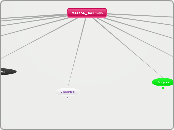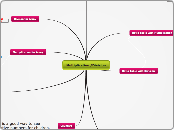MTE 280
Elementary Math
Base 10 Blocks
Base 10 blocks
Flats are hundreds
Longs are tens
units are ones
Methods
Division
15/5
15 into 5 groups is 3
Finding out how many things are inside a group
Traditional is long division
Divisibility Rules
Upwards division
Repeated Subtraction
Prime Factorization
Downwards division
Video
Factor Trees
Multiplication
Multiplying two numbers is finding the area all the time.
Reinforces prior understanding
Is repeatable
Is efficient-ish
Image
Area Model
Reinforces prior understanding
Is repeatable
Is efficient enough
Image
Subtraction
Finding a difference
Equal Addens
Left-to-right
Reinforces prior understanding
Is repeatable
Is efficient
Image
Decomposing (expanded form)
Breaking down the numbers by place value
Reinforces prior understanding
Is repeatable
Is not very efficient
Image
Addition
Combining numbers
Lattice
Lattice lets you add big numbers without having to carry 10s or 100s.
Reinforces prior understanding
Is repeatable
Is very efficient
Image
Scratch Method
Scratch method depending on your base, you will slash for every set, and if left over you will continue to add until you run out. Like the video shows.
Reinforces prior understanding
Is repeatable
Is very efficient
Image
Trade-off
Trading off numbers gives out numbers in order to get friendly numbers
Reinforces prior understanding
Is repeatable
Is not the most efficient, but is efficient
Image
Friendly Numbers
Friendly numbers combine numbers to get favorable numbers
Reinforces prior understanding
Is repeatable
Is not the most efficient, but is efficient
Image
Left-to-Right
Left-to-right you add numbers based on place value starting at the left
Reinforces prior understanding
Is repeatable
Is efficient
Image
Expanded Form
Expanded form breaks down numbers based on place value
Reinforces prior understanding
Is repeatable
Is not very efficient
Image
Order of operations
PEMDAS can be confusing
Use this instead:
Grouping
Exponents
M/D Divide or Multiply (Left to Right)
S/A Add or Subtract (Left to Right)
Image
Image
Numbers
Decimals
Decimals are fractions
Do not say line up your decimals, Say line up your whole numbers.
1.0 Ones
0.1 Tenths
0.01 Hundreths
0.001 Thousandths
Image
Multiply/ Divide
Add/Subtract
Fractions
*Do not teach to solve using improper fractions*
Top number is how many pieces we have
Bottom number is the size of the pieces
Showing Fractions
Multiplying/ Dividing Fractions
*Do not say cancel out* say "funky 1" instead
Image
Adding/ Subtracting Fractions
Image
Comparing Fractions
Less than symbol looks like an L <
Greater than symbol >
Reasoning for comparing fractions:
same denominator
numerator the same so went with (bigger/ smaller) pieces
anchor fractions ( bigger/ smaller than half)
Bigger or smaller pieces (number) away
Image
Integers
Multiplying/ Dividing
Same sign gives you a positive answer
Different sign gives you a negative answer
Images
Subtracting
Adding inverse: KCC or Keep Change Change
Images
Adding
Images
Prime
Prime numbers
Composite
Composite Numbers









